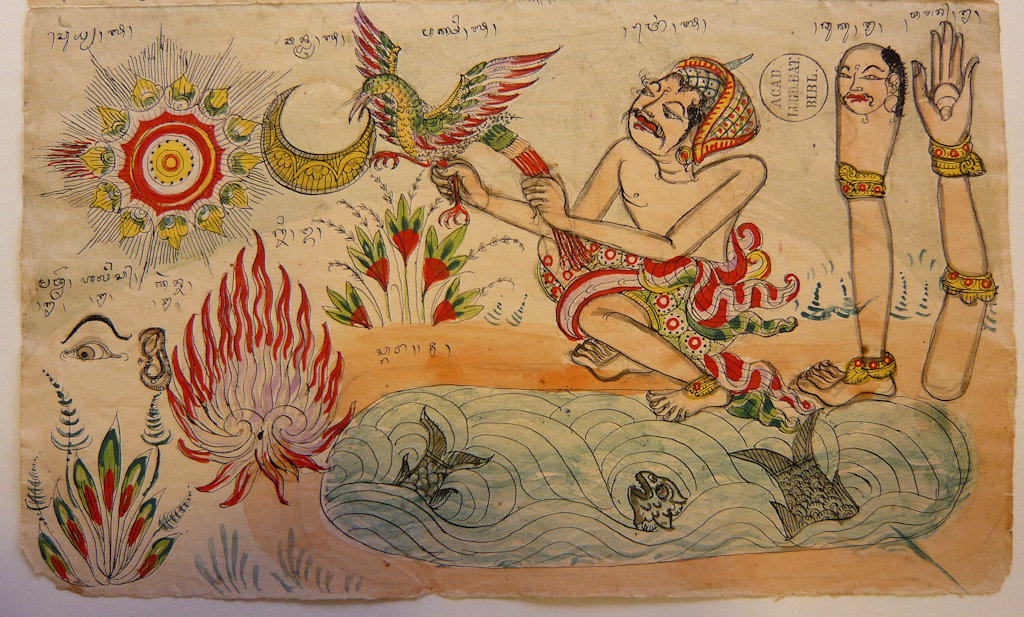KETOET GEDE, SINGARAJA, DRAWINGS OF SYMBOLS OF NUMBERS FOR DATES, WEWATEKAN, DATING TABLE
LOr. 3390-39, bottom, the numbers 1,2,3 and 4
Drawing on Dutch paper, watermark Pro Patria, countermark VdL., 41.5 x 34 cm
At the top on the left there is a round object surrounded by triangles, A text in Balinese script in ink says: suryya, 1, sun, the number is one. On the right of the sun is a crescent with a text: ‘’candre, 1’’, moon, the number is one. On the right of it a bird flies op, facing left. It is held by a sitting man by its left paw and tail. The man is clad in a loincloth and he is wearing a scarf on his head. A text on top of the bird says: ‘’paksi,1’’, bird, the number is one; on top of the man is written: ‘’wong, 1’’, man, the number is one. On the right of him a leg with a foot is depicted. It has a small head in the thigh. There are rings of jewellery round the ankle and knee. This leg represents a thigh-ghost. A text on top reads: ‘’suku, 2’’, foot, the number is two. On the far right an arm with a hand pointing upwards is depicted. There are rings of jewellery round the elbow and the wrist. A text says: ‘’tangan, 2’’, hand, the number is two. On the second row at the bottom on the afar left is an eye. It is of the refined male type. A text on top reads: ‘’matte, 2’’, eye, the number is two. On top of the eye is an eyebrow with a text: ‘’halis, 2’’, eyebrow, the number is two. An ear is drawn on the right of the eye. A text says: ‘’karnna, 2’’, ear, the number is two. There is a fire on the right of the ear with a text: ‘’gni, 3”, fire, the number is three. On the far right at the bottom, there is water with two fishtails and a head protruding. A text on top says:’’sgara, 4’’, ocean, the number is four.
Van der Tuuk has added in Latin script in pencil on the top part of the page: wewatekan, dating table. The numbers by which a date can be expressed are changed by anthropomorphic, theriomorphic and other symbols. Such symbols are found in sculpture on temple and palace gateways all over Bali. They are also found on drawings on wood depicted on the back-piece of a ritual pavilion. They symbolize the year in which the wall, gateway, door, or drawing was finished or refurbished. In Bali they are to be read from left to right. In most cases the year of the Indian Saka era is given, which means that 78 years have to be added, corresponding with the western calendar.

